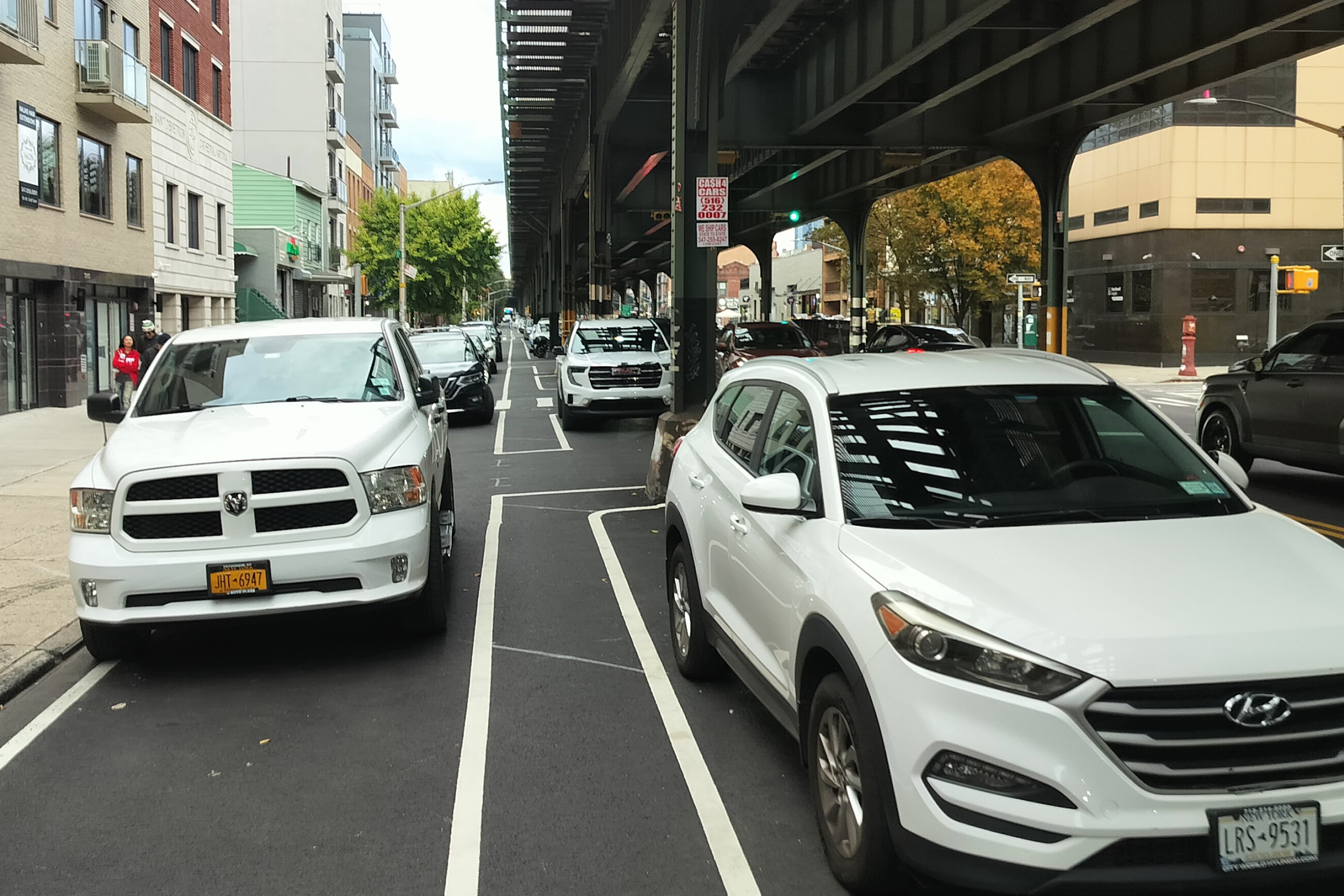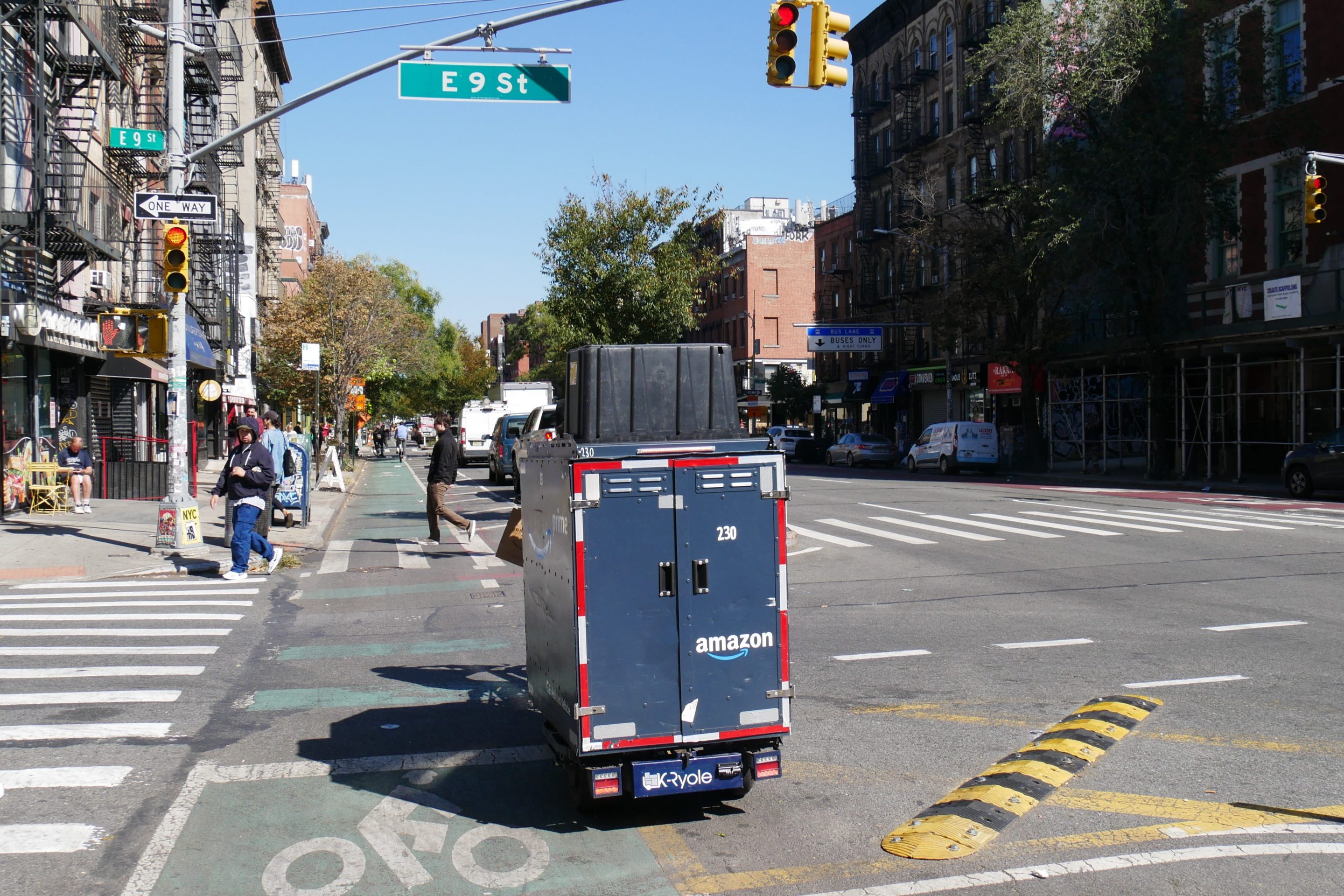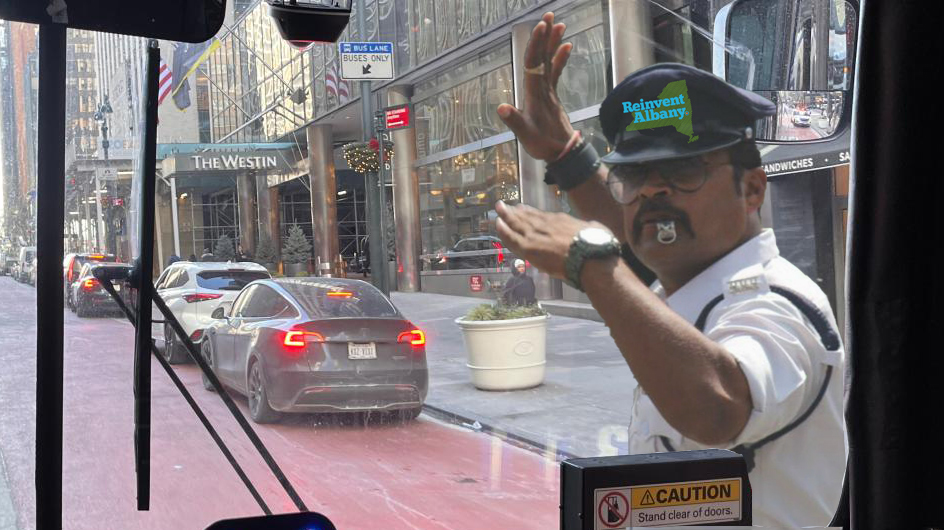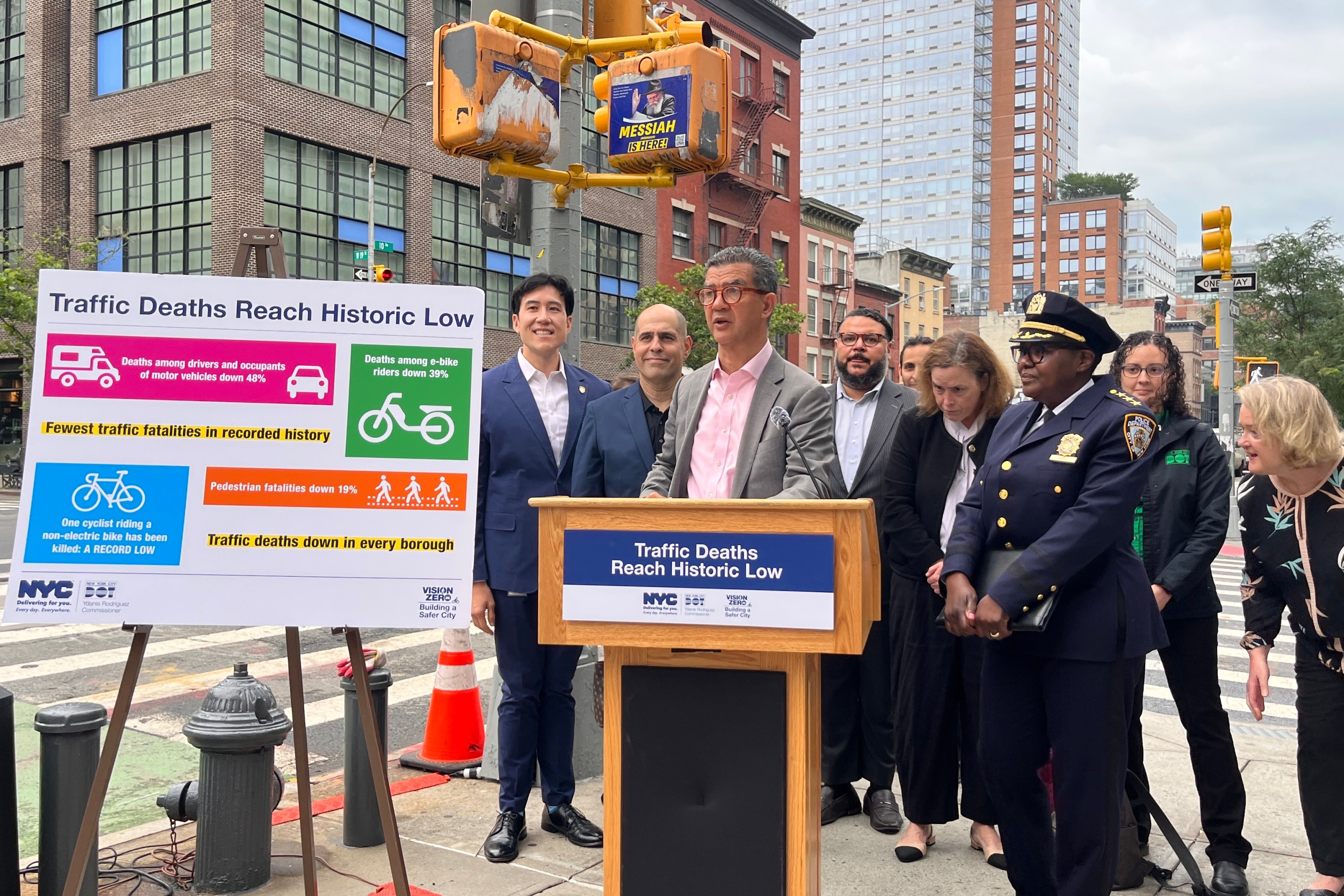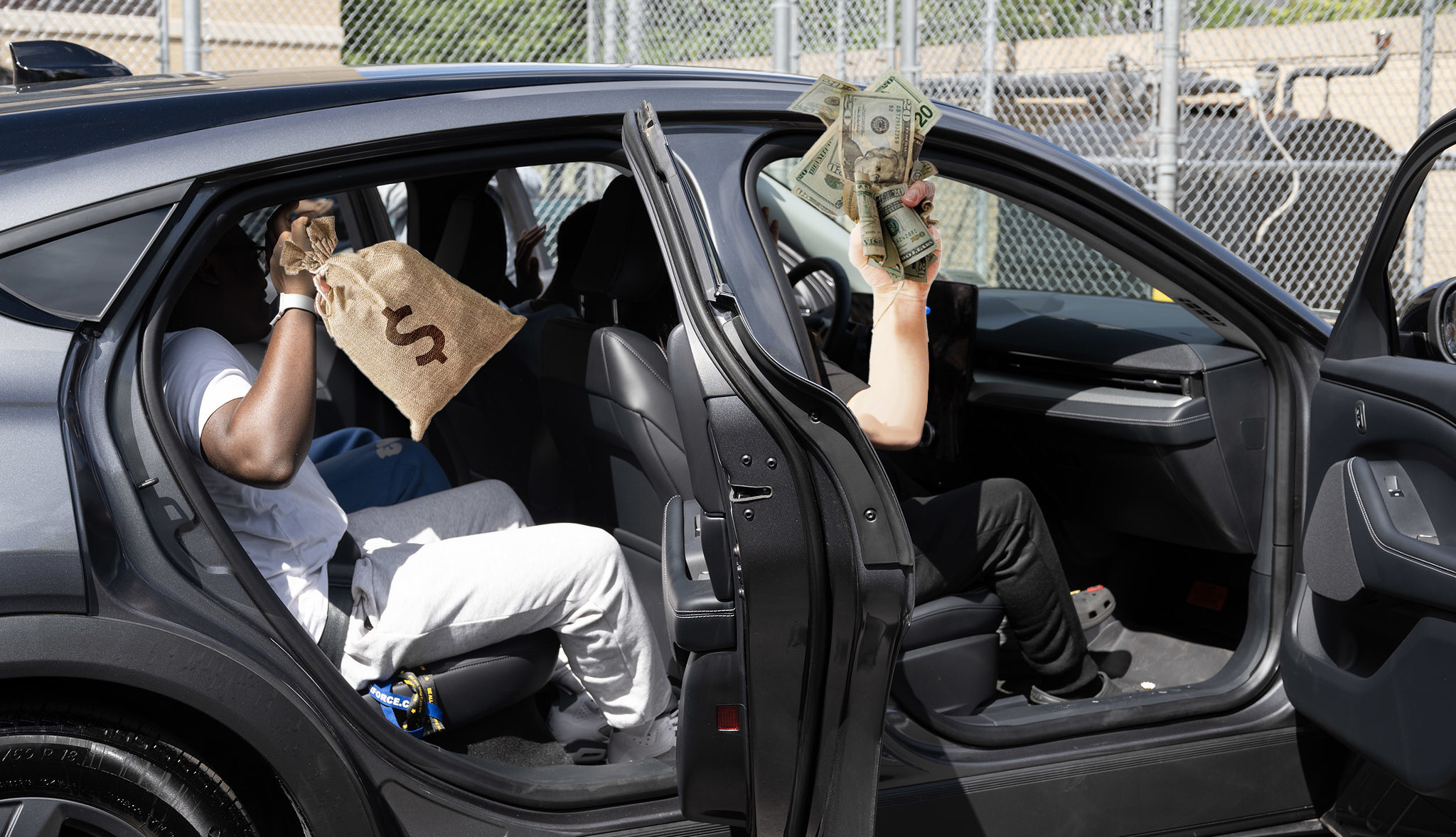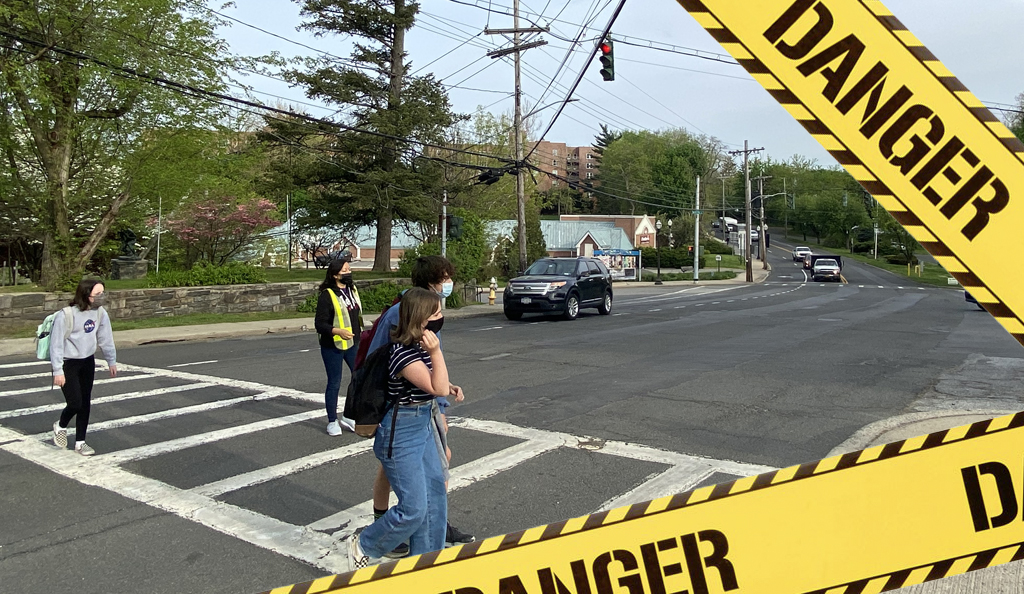
Where's the beef? Under Rep. Anthony Weiner's plan, vehicles, like the one above, would not be charged a fee to use New York City's most heavily congested streets
On Monday evening, just hours before the federal government's announcement that it would give New York City $354.5 million to kick-start Mayor Bloomberg's congestion pricing plan, Rep. Anthony Weiner (D-NY 9th District) spoke with New Yorkers on environmental and energy issues at a forum hosted by Solar 1.
One of the earliest vocal critics of Mayor Bloomberg's congestion pricing plan, Weiner made clear to the environmentally-conscious audience that his position has not changed on the subject. Rather than charging motorists any fee, Weiner said that he would rather tackle New York City's traffic congestion problem by improving ferry service on the East River, increasing cycling mode share to 10 percent of all commuter trips, reducing truck traffic during peak hours and starting work on the Cross-Harbor Freight Tunnel. A Democratic contender for Mayor in 2009, Weiner did not delve into the specifics of how he would accomplish or pay for the implementation of his transportation policy goals.

Weiner, who told the Brooklyn Eagle yesterday, "Congestion pricing is simply a bad idea that will create a giant expensive bureaucracy, hand too much authority to state agencies, and give many suburbanites a free ride at the expense of New York City residents," laid out a four point critique of congestion pricing. He said:
- Congestion Pricing is a regressive tax: Weiner said he believes congestion pricing will hurt New York City's poor and small business owners, while wealthy suburbanites will pay whatever it costs to keep driving. The commuter tax, Weiner said, was a much more effective way to raise money for the city.
- Congestion Pricing will not raise enough money for mass transit: Weiner said that the technology necessary to run a congestion pricing system is too expensive to set up and run compared to the amount of revenue that it will bring in. Weiner suggested that 40 percent of the revenue generated by the system would go towards paying to run it. He also expects that whatever funds are raised for mass transit will ultimately be deducted from New York State and Federal mass transit aid to New York City.
- Congestion Pricing is a divisive issue: Weiner believes that congestion pricing draws unnecessary borders within and across different communities, especially between the outer boroughs and Manhattan.
- There are other more effective means to reduce congestion: In addition to his call for starting construction on the Cross-Harbor freight rail tunnel, increasing bicycle mode share and beefing up ferry service, Weiner said that traffic flow could be improved simply by better enforcement of existing traffic laws.
Weiner also spoke more broadly about environmental policy and politics on both the local and national levels.
He places much of the blame for the lack of action on climate change squarely at the feet of the Bush administration and powerful members of Congressional energy and environment committees from districts where coal, oil and automotive production are influential. Weiner said that he is proud of what Congressional Democrats were able to accomplish in the recent energy conservation tax bill and he looks forward to passing a bill establishing a cap and trade program to reduce greenhouse gas emissions by 80% by 2050. He views environmental issues as an opportunity to unite Republicans and Democrats.
When pushed by moderator Chris Neidl and members of
the audience for specifics, Weiner offered four ideas for making New York City more environmentally friendly:
- A smart electricity grid: He wants consumers to be able to see their electricity usage and cost in real-time.
- Increase Bike Commuting: He would like to increase protected bike
lanes and bike parking and set a modal target of 10 percent of commuters by bike. - More Ferries: He would like to start a number of ferry services from
Brooklyn and Queens to Manhattan along the East River and from Far
Rockaway and Sheepshead Bay. - Reduce Trucks During Peak Hours: He would like to see the Cross-Harbor Freight Tunnel get started and he would provide an incentive for trucks to make their deliveries at night.
The feeling among environmental leaders I spoke with after the Q&A was that Weiner falls into that frustrating camp of New York City Democratic politicians who say all the right things and seem to agree with progressive goals on the surface, yet when it comes to putting a real plan into action, Weiner seems to be more worried about upsetting vocal constituents than achieving tangible gains.
Photo: The Oscar Mayer Weiner Mobile in Times Square by jacksonsquare on Flickr
